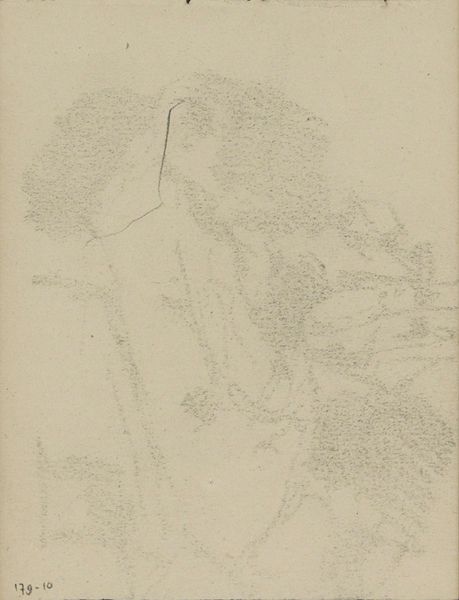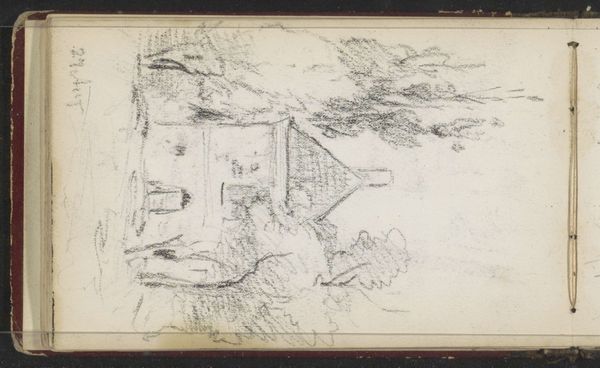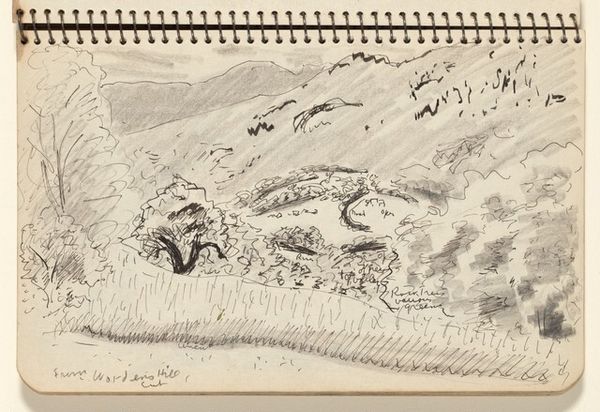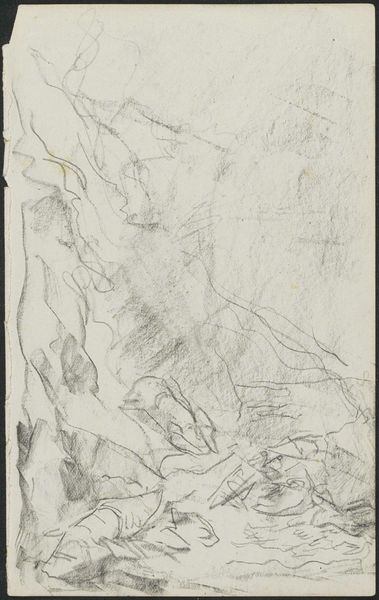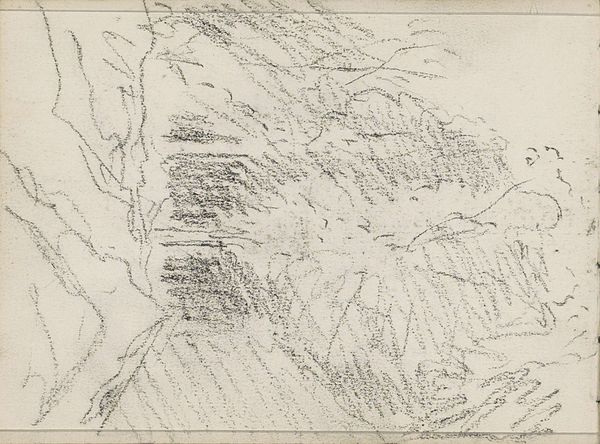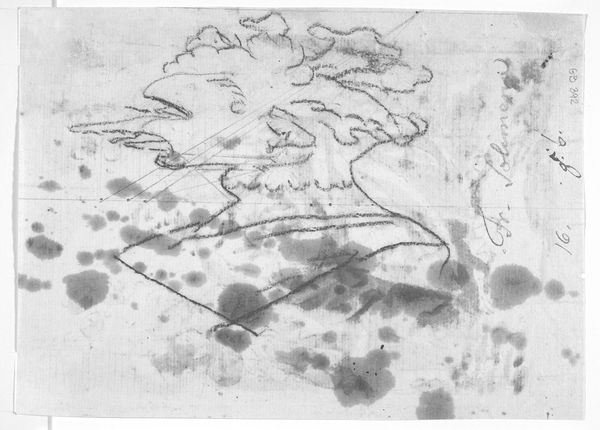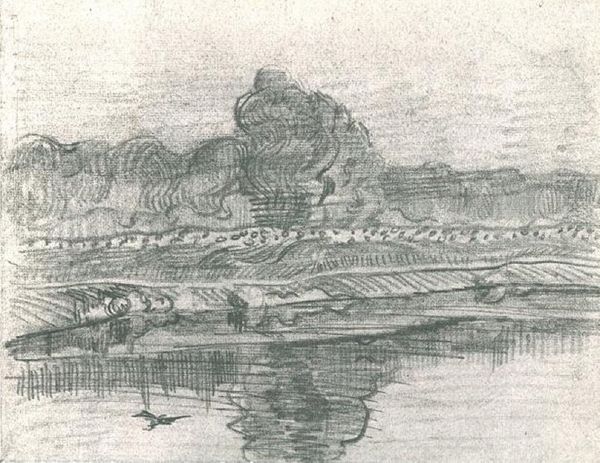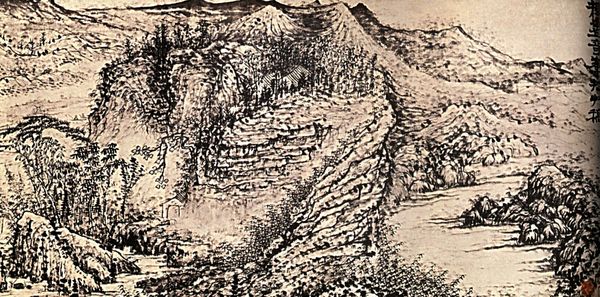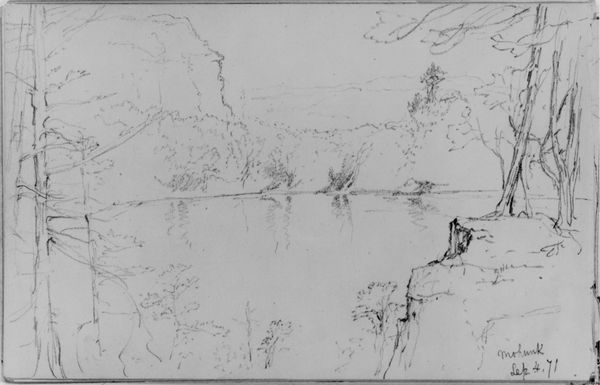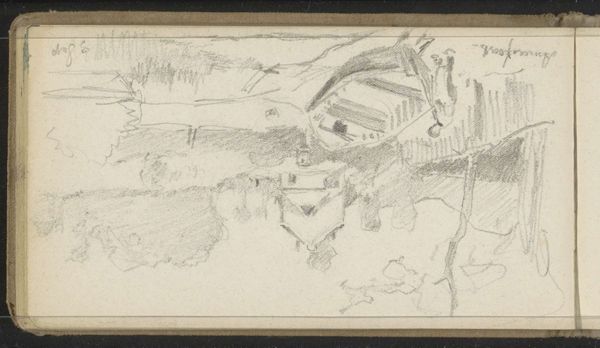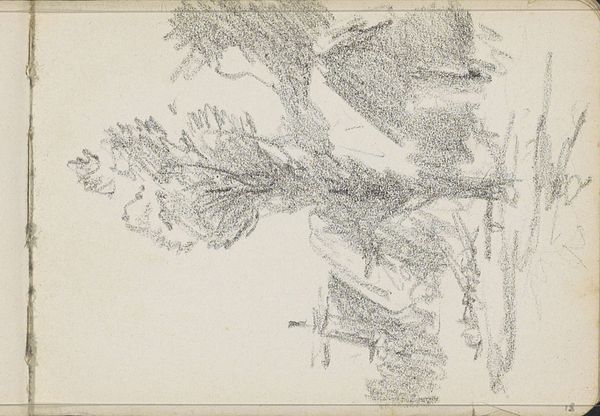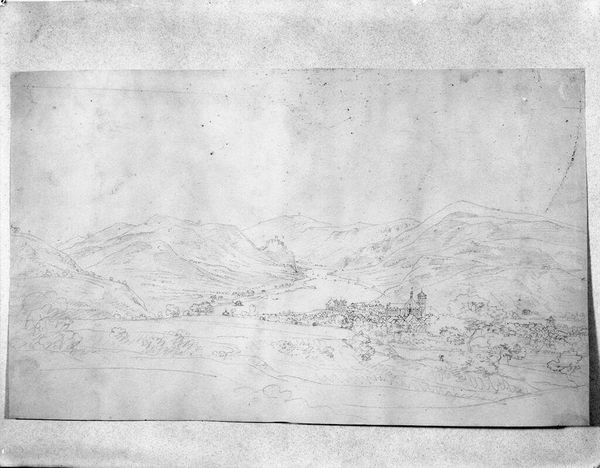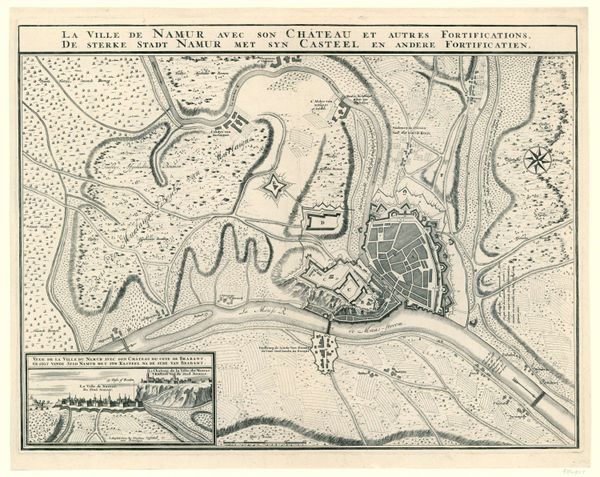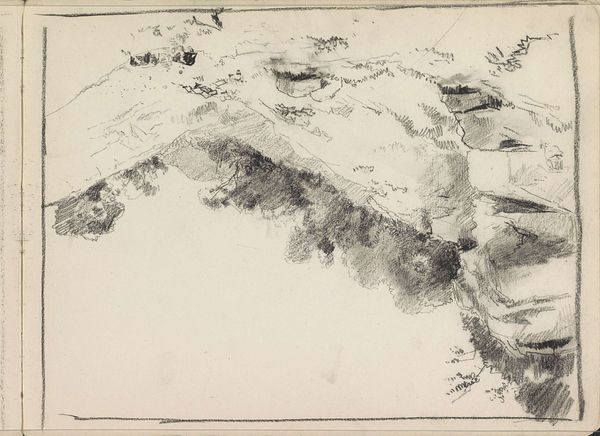
drawing, pencil
#
drawing
#
pencil sketch
#
landscape
#
geometric
#
sketch
#
mountain
#
pencil
#
russian-avant-garde
Copyright: Public domain
Curator: Standing before us is a pencil drawing titled "Tervus," created in 1918 by Nicholas Roerich. It’s currently held at the Rose Art Museum at Brandeis University. Editor: Immediately, I'm struck by its somber tone. The sharp angles and heavy shading create a sense of isolation, even within this natural landscape. It's stark. Curator: Indeed. Roerich's landscapes often depicted a symbolic and spiritual understanding of nature. It’s important to recognize his firm belief in the role of art as a cultural bridge, a vessel for disseminating knowledge about humanity's interconnectedness, especially during the turbulent times following World War I. The Russian avant-garde were particularly involved in these discourses. Editor: I see that clearly here, although abstractly rendered. Is it a mountain or a ruin he's depicted? Or does that even matter? The almost geometric rendering points towards something solid and foundational. The Russian Revolution was only a year earlier… Was the drawing responding to the rapid and monumental reshaping of Russian society, I wonder? Curator: Certainly, his work in this period frequently critiqued societal norms and structures. Notice how the small details like the stunted trees add a fragile beauty against this imposing stone structure, hinting at nature's persistence amidst change. I wonder if you could interpret those "houses" around the top edge of the sketch as relating to ideas around human resilience too? Editor: Those "houses," as you call them, become so important to unpack what it is about. We have this enormous, seemingly unassailable mass, and tucked amongst it are signs of civilization. Yet those houses aren’t enough to quell my feeling of disquiet that emerges out of this rough pencilwork. It challenges our sense of stability, of belonging. Are the inhabitants sheltered, or threatened, by their surroundings? Curator: Perhaps Roerich offers a more hopeful take on the shifting grounds in post-revolutionary Russia? His focus, after all, was not to incite division but foster cross-cultural understanding and awareness. Editor: Maybe. However, Roerich was a complex, problematic figure, whose personal spiritual beliefs led him into increasingly strange and dangerous ideological territory. Looking at "Tervus", perhaps it isn’t so much about unity as much as a cautionary message embedded in this disquieting, unstable landscape. Curator: A valuable reminder to delve into the complexities behind every artist. Roerich's work encapsulates the turmoil of his time, prompting questions rather than dictating answers. Thank you for bringing those vital interpretive lenses. Editor: And thank you for the history and context; these allow me to appreciate the artist’s own story, while letting the drawing retain its ambiguities, its anxieties, its… call to something beyond.
Comments
No comments
Be the first to comment and join the conversation on the ultimate creative platform.
